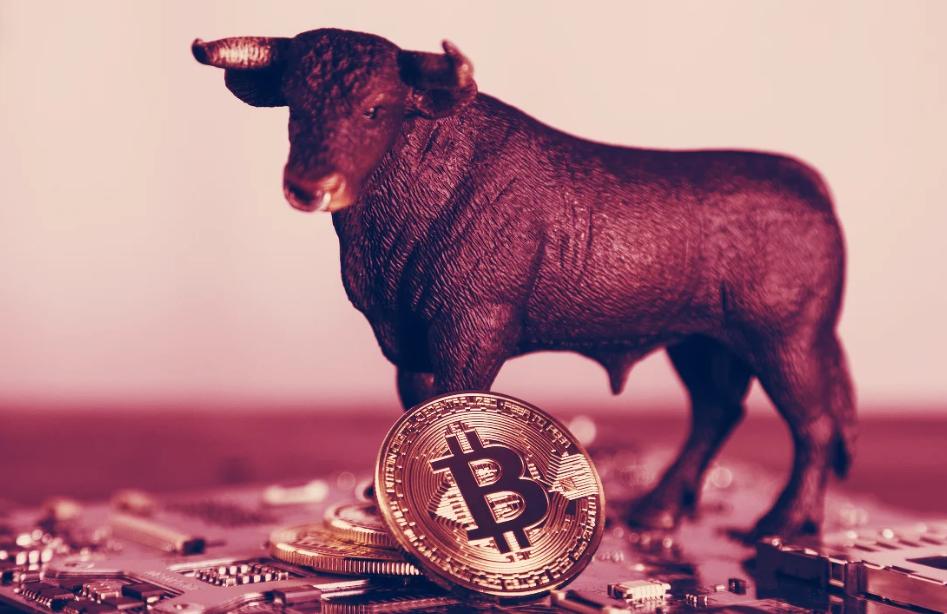BTC recovers to 63,000 USD, multiple data points suggest it may have bottomed out
Author: BitPush
The cryptocurrency market opened the second half of the year with an upward trend on Monday.
Recent U.S. manufacturing activity data shows that the U.S. manufacturing PMI further fell into contraction territory in June, hitting a four-month low, which has strengthened investors' hopes that the Federal Reserve may cut interest rates in September, as the economy appears to show signs of weakness. Investors are still waiting for the June employment report to be released on Friday; if the report shows further cooling in the labor market, it will provide more support for rate cuts.
BitPush data shows that Bitcoin (BTC) rebounded above the support level of $62,800 in the morning session and reached a daily high of $63,820 after lunch. As of the time of writing, Bitcoin is trading at $63,263, with a 24-hour increase of 2%.

Most altcoins in the top 200 by market capitalization followed Bitcoin's rise.
LayerZero (LZO) saw the largest increase, rising 15.1% to a trading price of $3.83, followed by Bonk (BONK) up 14.1% and Ethereum Name Service (ENS) up 11.7%. Arkham (ARKM) had the largest decline, dropping 8.7%, Convex Finance (CVX) fell 7.1%, and io.net (IO) decreased by 4.4%.
The overall market capitalization of cryptocurrencies is currently $2.32 trillion, with Bitcoin's market share at 53.5%.
In the U.S. stock market, as of the close of the day, the S&P 500, Dow Jones, and Nasdaq indices all closed higher, rising 0.27%, 0.13%, and 0.83%, respectively.
Bitcoin price may be close to or have already bottomed out
CryptoQuant data shows that the premium index for Bitcoin on Coinbase has fallen to its lowest level since the FTX collapse. Similar values in November 2022 and August 2023 were accompanied by prices nearing a bottom, followed by a rebound.

David Lawant, head of research at institutional cryptocurrency trading platform FalconX, stated on X platform: "The darkness before dawn is always the darkest. The last time the Coinbase premium was this low was a few months before the massive rebound from October 2023 to March 2024."
According to data from analysis firm CryptoQuant, this indicator has been in negative territory for most of June and May, mirroring the market downturn in August and September of last year. On Friday, the indicator fell to nearly -0.19, the lowest since the FTX collapse in November 2022.
The negative value in early November 2022 coincided with the bear market low for BTC, which was below $16,000, followed by a price surge to nearly $25,000 in February, an increase of over 50%.
The lowest premium in August 2023 occurred a few weeks before Bitcoin reached a local bottom around $25,000. Subsequently, BTC remained in a range-bound fluctuation, and from October to January, driven by expectations of a U.S. Bitcoin ETF, BTC's price first doubled and then reached an all-time high.
Lawant stated: "At least recently, the Coinbase premium has become a reliable, confirming, and even leading indicator of the overall market trend, highlighting the significant influence of the U.S. market in determining market price formation. There are signs that the trend will be very exciting in the next 6 to 12 months, but it may also be full of turbulence."
Given that several upcoming catalysts are centered around the U.S.—such as ETF liquidity, U.S. monetary policy, and the presidential election—he expects this trend to continue.
Tailwinds and Headwinds
Despite the rebound, Bitfinex analysts pointed out that Bitcoin has failed to maintain the positive tone it had at the beginning of the year. In recent weeks, specific factors have further hindered the price of digital assets, leading to a lackluster end to the first half of the year.
As long-term holders resumed selling and oversupply affected the market, BTC also decoupled from the U.S. stock market in June.
Analysts stated: "The policy environment has led to reduced volatility, which has impacted Bitcoin's price. BTC has struggled to maintain upward momentum and has decoupled from the U.S. stock market, while long-term Bitcoin holders who paused selling in early May have returned. Although the reduced selling from mining companies indicates some market stabilization, the ongoing cashing out by long-term holders suggests a weak near-term outlook."
Analysts noted: "Meanwhile, oversupply continues to exert pressure on the market, with Mt. Gox creditors and the German Federal Criminal Police Office (Bundeskriminalamt) potentially selling Bitcoin, creating potential selling pressure."
As for tailwind factors, Bitfinex emphasized, "The Fed's preferred inflation indicator—the Personal Consumption Expenditures Index—remained unchanged in May, indicating that the inflation rate is currently only slightly above the Fed's 2% target."
They stated: "There is hope that this could drive a rate cut in September. The third estimate of U.S. GDP for the first quarter supports the case for such action, indicating that despite a slight upward revision, the economic fundamentals remain weak. Additionally, due to high mortgage rates and limited supply, consumer confidence is declining, with a lower percentage of consumers planning to buy homes, hoping for a rate cut to come soon."
Returning to the direct impact on Bitcoin prices, Bitfinex analysts stated that while "profits are expected in a bull market, the recent selling by long-term holders" has raised "concerns."
They warned: "If long-term holders continue to take profits at current levels (which we believe is unlikely to happen for an extended period), it could exert downward pressure on Bitcoin prices in the short term, potentially extending the current downtrend and affecting the bull market in the medium term."

Although many analysts have described Bitcoin's sideways price movement over the past four months as "boring," Ki Young Ju, founder and CEO of crypto analysis firm CryptoQuant, stated on X platform that periods of low market volatility are when whales accumulate the most, and Bitcoin is still in a bull market cycle.















